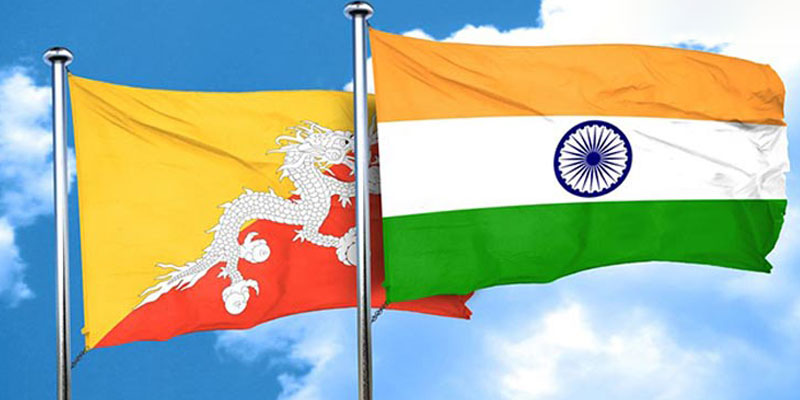- India
- Mar 08
- Sreesha V.M
India, Bhutan review boundary-related field work
• India and Bhutan reviewed fieldwork along the border between the two countries and discussed the potential for a collaboration in capacity-building measures in frontier regions.
• The issues were deliberated upon at a two-day meeting in New Delhi that concluded on March 7.
• The Indian side at the talks was led by Surveyor General Hitesh Kumar S. Makwana, while the Bhutanese side was headed by Dasho Letho T. Tangbi, Secretary, the International Boundaries of the Royal Government of Bhutan.
• Both sides expressed satisfaction at the work completed by respective field survey teams and other stakeholders on boundary-related field matters.
• The two sides have also finalised a work plan for the next three field seasons.
• The two sides discussed the potential for technological and capacity building collaboration relating to survey and boundary related work, as per the priorities of both the governments.
India-Bhutan Relations
• The basic framework of India-Bhutan bilateral relations is the Treaty of Friendship and Cooperation signed in 1949 between the two countries and revised in February 2007.
• Diplomatic relations between India and Bhutan were established in 1968 with the establishment of a special office of India in Thimphu.
• An agreement on trade and commerce between India and Bhutan was first signed in January 1972. Since then, the agreement has been renewed/revised many times.
• In November 2016, both countries signed an Agreement on Trade, Commerce and Transit, which provides for a free trade regime aimed at boosting bilateral trade for mutual benefit.
• In March 2024, Prime Minister Narendra Modi received Bhutan’s highest civilian award, the ‘Order of the Druk Gyalpo’, making him the first foreign head of the government to receive the honour.
• The government of India has consistently supported the socio-economic development of Bhutan. Hydropower cooperation between the two countries is an example of win-win cooperation.
• India has been extending economic assistance to Bhutan’s socio-economic development since the early 1960s when Bhutan launched its Five Year Plans.
• Mutually beneficial hydropower cooperation with Bhutan forms the core of bilateral economic cooperation. For Bhutan, hydropower development continues to be a vital catalyst for socio-economic development. The ongoing cooperation between India and Bhutan in the hydropower sector is covered under the 2006 bilateral agreement for cooperation and its protocol signed in 2009. Four hydroelectric projects (HEPs) totaling 2,136 MW are already operational in Bhutan and are supplying electricity to India.
• The 720 MW Mangdechhu was commissioned in August 2019 and handed over to Bhutan in December 2022. Two hydroelectric projects, 1,200 MW Punatsangchhu-I, 1,020 MW Punatsangchhu-II in inter-governmental mode and Kholongchu HEP (600 MWs) under the joint venture mode are under various stages of implementation.
• India is Bhutan’s top trade partner both as an import source and as an export destination. Since 2014, India’s merchandise trade with Bhutan has almost tripled from $484 million in 2014-15 to $1,615 million in 2022-23., accounting for about 80 per cent of Bhutan’s overall trade, with the balance of trade in India’s favour.
• India’s top exports to Bhutan are petrol, diesel, passenger cars, rice, wood charcoal, cellphones, soya-bean oil, excavators, electric generators & motors, parts for turbines, transport vehicles and bitumen.
• India is the leading source of investments in Bhutan, comprising 50 per cent of the country’s total FDI.
• Around 600 big and small projects in the areas of infrastructure development, roads and bridges, industries, agriculture, e-governance, community development projects like irrigation channels, farm roads, block connectivity roads, basic health units, etc have been identified by the two sides and are at various stages of implementation.
• Apart from hydro-power cooperation and development partnership has moved into new and emerging areas with full interoperability of the flagship digital project RuPay, which has been successfully completed.
• BHIM UPI was launched in Bhutan on July 13, 2021. Bhutan became the first foreign country to adopt UPI standards for its QR deployment and the first country in the immediate neighbourhood to accept mobile-based payments through the BHIM app.
(The author is a trainer for Civil Services aspirants.)

